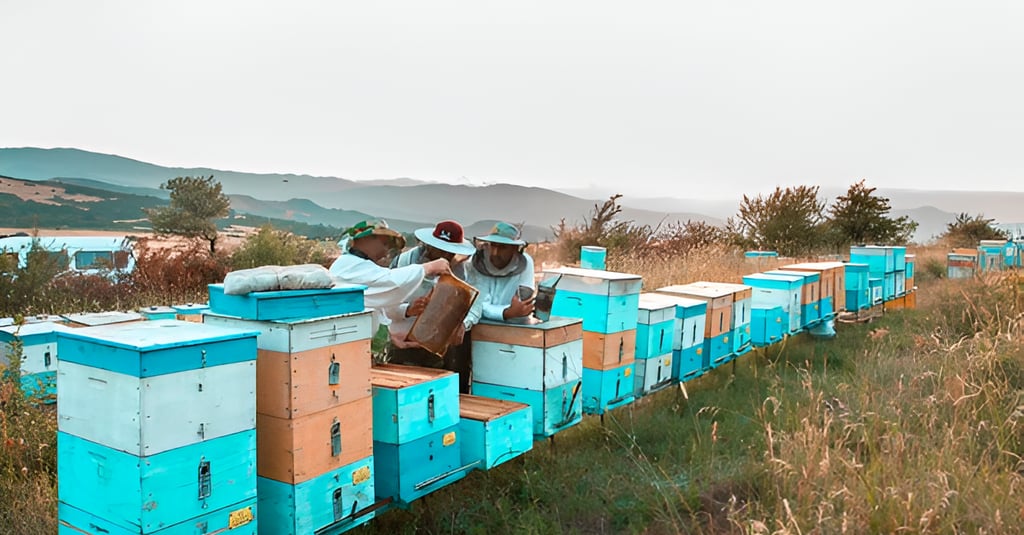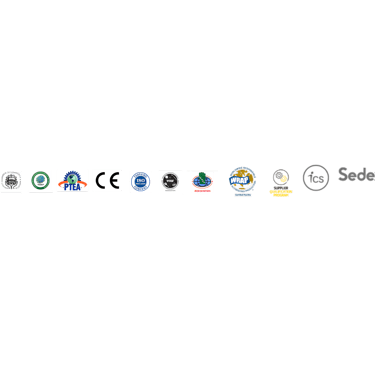How to Choose the Best Beehive Location
Learn how to choose the best beehive location for healthy, productive honey bee colonies. Essential tips for new and experienced beekeepers.


Selecting the ideal location for your beehive is crucial for the health and productivity of your honey bee colonies. Whether you're a novice beekeeper or an experienced apiarist, understanding the key factors that influence hive placement can make a significant difference in your beekeeping success. In this comprehensive guide, we'll explore the essential considerations for choosing the best beehive location and provide practical tips to help your bees thrive.
Understanding the Importance of Hive Placement
Before diving into the specifics, it's essential to recognize why proper hive placement matters:
Colony health: A well-chosen location supports the overall well-being of your bees.
Honey production: Optimal placement can lead to increased honey yields.
Bee behavior: The right environment encourages positive bee behavior and reduces stress.
Ease of management: A good location makes hive maintenance and inspections more convenient.
Now, let's explore the key factors to consider when selecting your beehive location.
Sunlight and Orientation
Sunlight Requirements
Bees require warmth and light to maintain their hive temperature and carry out their daily activities. When choosing a location:
Aim for morning sun exposure to encourage early foraging.
Provide partial shade in the afternoon, especially in hot climates.
Ensure at least 6 hours of direct sunlight daily.
Hive Orientation
The orientation of your hive entrance can impact bee behavior and colony health:
Face the entrance east or southeast to catch the morning sun.
Avoid facing the entrance directly into prevailing winds.
Consider using a windbreak if your area experiences strong winds.
Protection from the Elements
Wind Protection
Strong winds can disrupt bee flight patterns and make it difficult for bees to return to their hive. To protect your colonies:
Place hives near natural windbreaks like hedges, fences, or buildings.
If natural windbreaks aren't available, consider installing artificial barriers.
Ensure the hive is stable and won't topple in high winds.
Rain and Moisture Management
Excess moisture can lead to mold growth and other health issues for your bees. To manage moisture:
Choose a location with good drainage to prevent water accumulation.
Slightly tilt the hive forward to allow water runoff.
Consider using a hive cover or roof for additional protection.
Access to Water and Food Sources
Water Sources
Bees need a reliable water source within flying distance of their hive:
Locate your hive within 1/4 mile of a clean water source.
If natural water sources aren't available, provide a shallow water dish or birdbath.
Change the water regularly and add small stones or twigs for bees to land on.
Food Sources
Abundant food sources are crucial for bee health and honey production:
Choose a location with diverse flowering plants within a 2-3 mile radius.
Consider planting bee-friendly flowers and herbs near the hive.
Be aware of local agricultural practices and potential pesticide use.
Space and Accessibility
Hive Spacing
Proper spacing between hives helps prevent disease spread and reduces competition:
Allow at least 3 feet between hives.
If space is limited, consider using a two-tier hive stand.
Ensure enough room for future expansion of your apiary.
Beekeeper Access
Easy access to your hives is essential for regular maintenance and inspections:
Choose a location that's easily accessible year-round.
Ensure there's enough space behind the hive for you to work comfortably.
Consider the terrain and any obstacles that might make access difficult.
Legal and Neighborly Considerations
Local Regulations
Before setting up your hives, research local laws and regulations:
Check zoning laws and homeowners' association rules.
Register your hives if required by your state or local government.
Obtain necessary permits or licenses for beekeeping.
Neighbor Relations
Maintaining good relationships with neighbors is crucial for successful beekeeping:
Inform neighbors about your beekeeping plans.
Address any concerns they may have about bee stings or swarms.
Consider offering honey as a goodwill gesture.
Environmental Factors
Elevation
The elevation of your hive can impact bee behavior and colony health:
Avoid low-lying areas prone to cold air pockets or flooding.
If possible, place hives on a slight slope for better air circulation.
In colder climates, consider south-facing slopes for added warmth.
Pesticide Exposure
Protecting your bees from harmful chemicals is essential:
Be aware of nearby farms or gardens that may use pesticides.
Communicate with local farmers about your hives and pesticide use.
Consider creating a buffer zone of bee-friendly plants around your apiary.
Seasonal Considerations
Winter Preparation
Preparing your hive location for winter is crucial in colder climates:
Ensure the hive is protected from harsh winter winds.
Consider using a winter wrap or insulation for added protection.
Plan for snow accumulation and ensure the hive entrance remains clear.
Summer Heat Management
In hot climates, preventing overheating is essential:
Provide afternoon shade to prevent the hive from becoming too hot.
Consider using screened bottom boards for increased ventilation.
Monitor for signs of heat stress and take action if necessary.
Monitoring and Adjusting
Regular Observations
Continuously assess your hive location and be prepared to make changes:
Monitor bee behavior and colony health regularly.
Observe flight patterns and foraging activity.
Look for signs of stress or unusual behavior.
Seasonal Adjustments
Be prepared to make adjustments based on seasonal changes:
Consider moving hives to sunnier locations in winter.
Provide additional shade or ventilation during hot summer months.
Adjust hive entrances to manage airflow and protect against pests.
Conclusion
Choosing the best beehive location is a critical step in successful beekeeping. By considering factors such as sunlight, protection from the elements, access to food and water, space requirements, and legal considerations, you can create an optimal environment for your honey bee colonies to thrive. Remember that beekeeping is an ongoing learning process, and you may need to make adjustments as you gain experience and observe your bees' behavior.
By taking the time to carefully select and prepare your hive location, you're setting the foundation for healthy, productive colonies and a rewarding beekeeping experience. Keep observing, learning, and adapting, and you'll be well on your way to becoming a successful beekeeper.
#beekeeping #bees #honeybees #apiculture #backyardbeekeeping #savethebees #pollinators #honeyharvest #beekeepersofinstagram #beekeepinglife #apiary #honeycomb #raisingsweetbabies #flowertobee #beeswax #queenspotting #beevenom #propolis #beepackages #splittyourcolony #honeybee #beehive #beekeepingtips #beefriendly #beeremoval #beerescue #beekeeperslife #beekeeper #naturalbeekeeping #beeproducts #honeylove #rawhoney #manukahoney #beeraining #thebeeline #beebusy #buzzybees #bzzzz #beehiveinspection #beehouses #queenbee #workerbees #sustainablebees #beekeepingjourney #beekeepingseason #nycbees #labees #chicagobees #houstonbees #phoenixbees #phillybees #sandiegobees #dallasbees #austinbees #jacksonvillebeekeepers #fwbees #clebees #charlottebees #detroitbees #memphisbees #denverhoneybees #dcbees #bostonbees #nashvillebees #seattlebees #baltimorebees #pdxbees #okchoneybees #vegasbees #tucsonbees #fresnobees #sacramentobees #lbbeekeepers #kcbees #atlantabees #raleighbees #miamibees #minniebees #tulsabees #wichitabees


